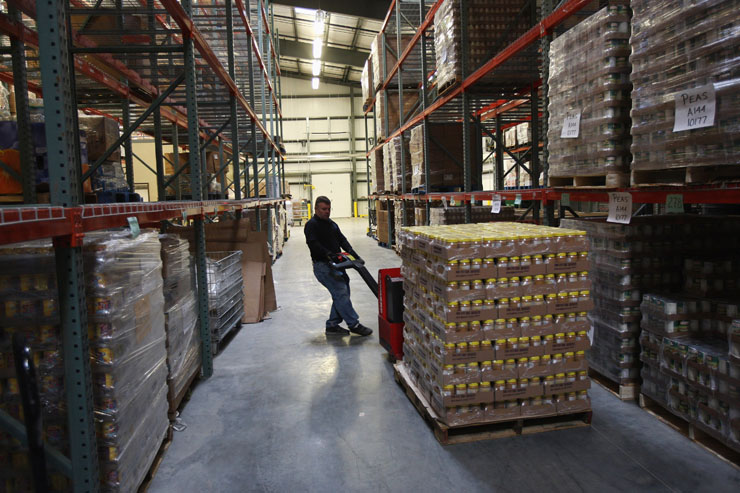Bans on foods, especially nuts, have become common on schools, and across entire school boards, in recent years. One consequence: the near-disappearance of the lunch box peanut-butter sandwich that the parents of today’s children remember. But it’s not hard to find experts in children’s allergies who say they’re not warranted.

Food bans cover a wide range of foods, since nut proteins can lurk in many store-bought and homemade products, such as cookies.
The biggest effect, however, has been an effective ban, in many schools, on the traditional bedrock of North American school lunches, the peanut butter sandwich.
Peanut butter, which is a cheap source of high-quality protein, can be a staple for low-income families, explains Sarah Anderson of Toronto’s Daily Bread Food Bank.
“The cost and nutrition are obviously important factors – both for people on low incomes and for food banks who need to purchase items like peanut butter when they can’t rely on donations alone,” she explained in an e-mail.
“Protein is an important item as part of a balanced meal, and protein in general is one of our most needed items. It’s a healthy, filling and cost-effective way to get the protein you need, in addition to being a non-perishable item.”
The Daily Bread Food Bank distributed over 130,000 pounds of peanut butter last year, she said.
The implication is that for many pupils, peanut butter is the only protein that their families can afford to send to school with them.
“Peanuts are relatively cheap, and should be used by those who cannot afford another source of protein,” Ben-Shoshan says.
The American scientist George Washington Carver did much to popularize peanuts (to the point that he is credited, incorrectly, with having invented peanut butter) as both a source of cheap nutrition and as a way for desperately poor southern farmers to make a living.
“Peanut butter is what most severe allergic reactions have been associated with, unfortunately,” Waserman says.
“We don’t have a lot of fatalities, but whatever has been described has been more severe with peanut, and it’s a smeary sort of substance that’s easily left all over the place, and it has been – water fountains, sinks, whatever.”
“But at the end of the day you can’t do it all, so I don’t know what the right answer is, frankly.”
Food allergies seem to be more prevalent in better-educated families and less among immigrants, though it’s not clear why. A 2012 Canadian study raised a number of possible explanations, including smaller family size, more use of antibiotics and vaccination; they also speculated that Western dietary habits might lead to higher rates of food allergy.
The authors also raised the possibility that the group with higher reported allergies had better access to medical care.
Similarly, an Australian study showed that allergies were more common among the Australian-born than in first-generation immigrants to Australia from Asia.
Food allergies are more common in Toronto public schools in higher-income areas, data obtained by Global News under access-to-information laws shows.
The Toronto data, which counts pupils registered with the school board as having a food allergy which needs to be accommodated, shows 7,472 students with an allergy, to nuts or dairy, about three per cent of the total.
“Education, and high income, is probably a marker of a certain lifestyle, and that lifestyle probably increases the risk of peanut allergy,” Ben-Shoshan says.
“Why is that, is a different question. One of the hypotheses that is supported by our studies is that maybe those highly educated, and more aware adults, or parents, that followed previous recommendations, avoided the introduction of peanuts until a later age, and maybe that’s why there’s an increase in peanut allergies in these groups.”
- ‘Shock and disbelief’ after Manitoba school trustee’s Indigenous comments
- Canadian man dies during Texas Ironman event. His widow wants answers as to why
- Several baby products have been recalled by Health Canada. Here’s the list
- ‘Sciatica was gone’: hospital performs robot-assisted spinal surgery in Canadian first
Better-educated parents may have better access to health care, making allergies more likely to be detected, Waserman says.
The Toronto board’s allergy statistics are very close to national estimates – 1.29 per cent of pupils are reported to have a peanut allergy, very close to the national estimate of 1.68 per cent.
Some schools, however, have rates far higher than that. Bedford Park Junior Public School, near Yonge St. and Lawrence Ave. in Toronto’s midtown, has 60 students registered with food allergies, or 7.6 per cent of the student body. (An alternative school has a rate over 10 per cent.)
Not surprisingly, Bedford Park has the bluntest language of the several school handouts we studied: agree or disagree with it as a policy, it’s hard to avoid the fact that the school bans nuts or anything made with them:
School boards, and anaphylaxis advocates, avoid the word ‘ban,’ however:
“We never use that word,” Harada says. “Internally, externally – we don’t use the word at all.”
“It’s not part of our language. We’ll talk about what schools are doing to minimize risk. We’ll talk about restrictions, or food policies, but we don’t use that language. It puts you on one side of the equation or the other, and it’s very divisive.”
Food bans in our schools – Read the entire 5-part series here:
- Part 1: Why many medical experts think food bans in schools go too far
- Part 2: Why are food allergies linked to income?
- Part 3: Allergy tests full of false positives, doctor explains
- Part 4: Nut-free peanut butter substitutes are often banned
- Part 5: Is desensitization therapy for allergic kids a way out?
NEXT: An expert explains why food allergies are overdiagnosed







Comments